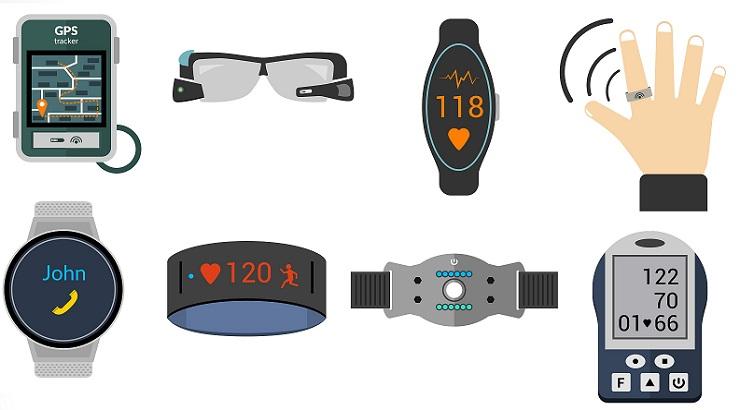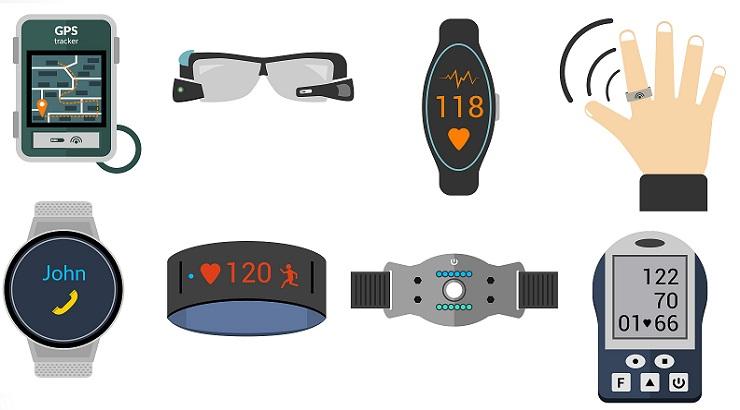How AI is impacting the healthcare industry
Over the past 20 years, we have seen how innovation has transformed and has been able to generate disruptions in almost every industry. In almost all...
4 min read
Anurag : Mar 17, 2020 12:00:00 AM


Wearable technology has gone from being non-existent to everywhere in only a few short years. Because of this unexpected acceptance surge, wearables have the ability, for better or worse, to change our lives and culture. As they are so new, it is hard to tell what effects they are going to have but we can speculate based on our current knowledge. Wearable devices also sparked a modern type of human–computer engagement with the rapid development of ICT. Its system enables user's accessibility and communication so they can easily access online knowledge and collaborate quickly when traveling with others.
Wearable technology opens the door for many exciting applications. It could lead to another technological revolution similar to the Internet and mobile communications industries. The potential economic impact is huge. It could lead to great opportunities for both the electronics and the fashion / textile industries, each representing around $450 billion in world trade.
The way most people cope with any potential health problems is now reactive. When people start feeling sick, pain or anything out of the ordinary, they go to a doctor's office. We encounter a health issue and we respond by having it checked out. There is room for a more holistic approach to healthcare with wearable tech. Instead of reacting to health problems after they start causing problems, wearables can be used to take early action.
It can also detect crisis as soon as they arise. You can set up this system to notify others, such as family members or healthcare professionals. This more proactive approach to healthcare can be very beneficial, since it can catch problems early before they develop into larger issues that could have dangerous health consequences.
Trips to the hospital itself can cost both time and money. We apply to the commissions and other costs for the meeting. Wearables were seen to reduce health-care expenditures. This is especially true for patients with conditions such as hypertension, diabetes and others that would require frequent assessments. Early diagnosis of a health condition would also assist with quicker care and thus raising the cost of medication and the risks associated.
Although we routinely use wearable smart watches to track heart rate, sleeping cycle and more, this technology's actual medical use is a blessing for patients. This is particularly true for those with chronic conditions, which require constant supervision. This would make it easier to provide a more accurate picture of the underlying condition by constantly gathering the medical data needed. There are patches, which can be placed on the skin for data collection. Such patches can provide medical grade data in real time to draw a clear pattern.
Wearables have begun to profoundly affect our lives, and there is so much to be anticipated in the future as the product continues to improve. Maybe we will see the technologies being introduced in the fashion industry to convey our personality, social status, and desires, or being made part of our bodies to improve our cognitive skills.
Wearables have the great advantage of being far more intimate and linked to the physical body of the consumer than any mobile device or laptop could ever wish for. Wearable technology helps us to check our fitness levels, map our whereabouts with GPS and display text messages quicker. Best of all, most of the tools that allow us to do this are free and lightweight hands, removing the need to detach our gadgets from our pockets.
A lot of the information listed above could be obtained before wearables, but it was sometimes a hassle and required devices which were not always convenient. Wearables are linked to our smart devices, conveying this knowledge to them and allowing us to access it later and now.
Healthcare professionals accept that consistent data sharing between medical technology platforms and software solutions and further analyzes of data are critical for moving from episodic to continuous care. Semantic interoperability can also remove the technical and physical obstacles to the exchange of information regarding healthcare within organizations and allow hospitals to recognize bottlenecks and handle equipment efficiently.
Wearable technology tools already have an effect in the healthcare sector today. Gym trackers like the Fitbit and Apple Watch allow you to track your exercises, heart rate, total daytime steps and more. Current people have no desire to get ill or spend on unnecessary services, but need to be handled separately instead. Wearables enable this. Large volumes of data collected by body sensors facilitate the personalization of experiences in health care. In the future, each customer will be treated on the basis of personal data and conditions rather than according to the clinical standards based on averages.
Thus, the way practitioners communicate with their patient is shifting from generalization to personalization. Patient information will become easier to access, thereby helping physicians to find the right treatment options much more easily. Every year, measuring heart rate becomes easier: some smartwatches and fitness bands can provide that information. However, people sometimes need more than a simple measurement of heart rate for fitness purposes. This is when the scene features heart alarms. As they are worn on the chest, they are able to give more precise information.
Wearable tech can save money in the healthcare system, too. It is projected that 20 percent of all healthcare costs are due to lack of regular activity, lack of adequate sleep, and alcohol, opioid and tobacco addictions. This will help patients by using wearable tech to facilitate more activity and better sleep habits.
Wearables are becoming more prominent in the day-to-day management of diseases and chronic conditions, from heart monitoring and electrocardiogram applications to temperature and reproductive cycle trackers. Wearable tech is such a new industry, and so much breakthrough promise lies ahead. The worldwide wearables market is predicted to nearly double in size from 2017 to 2021, due to the rapid growth in the medical field and increasing consumer adoption.
Wearable tech has the potential to bring huge advantages to health care providers. By using wearable devices to monitor patient data over a long period of time, healthcare professionals can gain a better insight into the issues that affect the patient. They can then use the data to make a diagnosis more accurate than they could have done without using the device.

Over the past 20 years, we have seen how innovation has transformed and has been able to generate disruptions in almost every industry. In almost all...

The Internet of Things (IoT) is changing the working pattern institutional values of many industries and sectors. Service devices which are powered...

The Internet of Things (IoT) refers to a network of physical objects, which can gather and share electronic information. The Internet of Things...